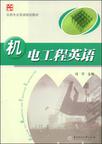机电工程英语
出版时间:2009-2 出版社:华中科技大学出版社 作者:冯宁 编 页数:143
前言
本书编写的目的是指导学生阅读与机电专业相关的英语书刊、文选,使学生在将来的工作中能够以英语为工具,获得相关的专业知识和产品信患,并在完成基础英语课程后,通过学习本教材保持英语学习的连续性,使英语水平再上一个台阶。 本书根据机电专业本身的特点,在选材上注重代表性和广泛性,涵盖了机械工程、电子电气、自动化控制、数控与计算机数控等几个部分的内容。每个部分又分为基本单元和阅读材料两部分,基本单元的选材主要体现专业英语的基本特点以及机电专业所涉及的主要专业知识和应用领域;阅读材料部分的选材涉及机电领域的一些最新技术应用,主要是为了扩展学生的视野。 作为专业英语教材,本书重点在于帮助学生在专业英语词汇的学习过程中提高科技英语阅读能力,力求做到专业性、科普性、趣味性的统一,尽量减少阅读中的专业知识障碍。 参与本书编写的有广东机电职业技术学院冯宁,广东交通职业技术学院宋春华,武汉铁路职业技术学院苏雪。其中Part I、PartⅡ、PartⅢ、PartⅣ由冯宁编写,PartV由宋春华编写,PartⅥ由苏雪编写。 本书由冯宁担任主编。在编写、整理和定稿过程中,得到了许多同行的指点,特别是得到了华中科技大学出版社杨鸥副编审的支持和帮助,在此表示衷心的感谢!本书参考了大量的国内外文献,对提供文献的作者,我们表示最诚挚的谢意! 由于作者水平有限,本书错误和不当之处在所难免,敬请读者批评指正!
内容概要
本书是一本实用的机电专业英语教程,內容涵盖了机电专业基础理论和应用领域的相关知识,既考虑到机电专业的基本体系结构,又体现了机电领域的部分最新技术及发展方向。全书共分为6个部分,包括机械基础、机构知识、电学知识、自动化技术、数控和计算机数控等內容。每个部分还配有相关的阅读材料。 本书旨在提高学生的专业英语阅读能力,掌握机电专业常用的英语词汇,以及了解机电领域的最新技术应用。本书不但可用作高职高专机电类专业英语的教学用书,还可作为相关工程技术人员的参考用书。
书籍目录
Part I Fundamentals of Machinery Unit 1 Engineering Drawing Unit 2 Tolerances and Surface Roughness Unit 3 Mechanical Properties of Metals Unit 4 Hydraulic System Reading Materials I 1.Heat Treatment of Steel 2.Classification of.Steels 3.Pressure-Control Valves and Flow-Control Valves 4.Benefits of a Quality SystemPart II The Knowledge of Mechanisms Unit 5 Mechanisms Unit 6 Mechanical Components Unit 7 Engine Lathe Reading Materials II 5.Types of Gear 6.Ball and Roller Bearings 7.Milling MachinesPart III The Knowledge of Electric Circuits Unit 8 Circuit Elements and Parameters Unit 9 Alternating Current Unit 10 Types of the DC Motor Reading Materials m 8.Three-phase Circuits 9.Integrated Circuit 10.Printed CircuitPart IV Technique of Automation Unit 11 Fundamental of Computer and Networks Unit 12 Fundamentals of Single-chip Microcomputers Unit 13 Control Devices and PLC Unit 14 Sensors and Transmitters Reading Materials IV 11.Fieldbus 12.Open-Loop and ClosedoLoop Control 13.Computer-controlPart V NC and CNC Unit 15 Construction of CNC Machines Unit 16 NC Programming Unit 17 Safety and Maintenance of CNC Machine Reading Materials 14.CAD/CAM 15.Industrial Robots 16.FMS 17.CIMSPart VI Writing and Grammar for Science and Technology in English Unit 18 Writing Unit 19 Grammar 附录 词汇表参考文献
章节摘录
Volume Controls Volume or flow control valves are used to regulate speed.The speed of an actuator depends on how much oil is pumped into it pet unit of time.It is possible to regulate flow with a variable displacement pump,but in many circuits it is more practical to use a fixed displacement pump and regulate flow with a volume control valve. There are three basic methods of applying volume control valves to control actuator speeds. They are meter-in,meter-out and bleed-off. 1.Meter-in circuit In meter-in operation,the flow control valve is placed between the pump and actuator.In this way,it controls the amount of fluid going into the actuator.Pump delivery in excess of the metered amount is diverted to tank over the relief valve. With the flow control valve installed in the cylinder line,flow is controlled in one direction.A check valve must be included in the flow control or placed in parallel with it for return flow.If it is desired to control speed in both directions,the flow control can be installed in the pump outlet line prior to the directional valve. The meter-in method is highly accurate.It is used in applications where the load continually resists movement of the actuator,such as raising a vertical cylinder finder load or pushing a load at a controlled speed. 2.Meter-out circuit Meter-out control is used where the load might tend to“run away”,11le flow control is located where it wiII restrict exhaust flow from the actuator. To regulate speed in both directions,the valve is installed in the tank line from the directional valve.More often control is needed in only one direction and it is placed in the line between the actuator and directional valve. 3.Bleed-Off circuit In a bleed-off arrangement,the flow control is teed off the supply line from the pump and determines the actuator speed by metering a portion of the pump delivery to tank.The advantage is that the pump operates at the pressure required by the work,since excess fluid returns to tank through the flow control instead ofthrough the relief valve. Its disadvantage is some loss of accuracy because the measured flow is to tank rather than into the cylinder,making the latter subject to variations in the pump delivery due to changing work loads. Bleed-off circuits should not be used in applications where there is a possibility of the load running away.
图书封面
评论、评分、阅读与下载
